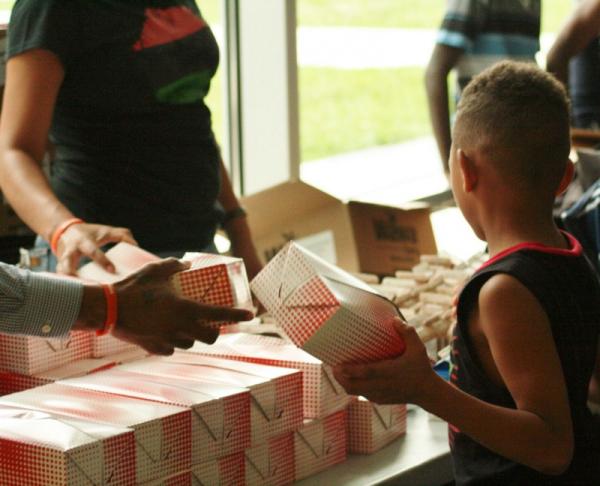June 14, 2018
Hunger Doesn’t Take a Vacation: Connecting More Children to Summer Meals
This post is part of Healthier Generation’s summer blog series highlighting creative ways to keep kids fed, active and engaged all summer long. The Food Research and Action Center (FRAC) is the leading national nonprofit organization working to eradicate poverty-related hunger and undernutrition in the United States.
Summer vacation can be a difficult time for millions of families across the country. Children lose access to the school meals they rely on during the school year, and parents may struggle to stretch already tight budgets to afford summer enrichment programs. This creates summer nutrition and opportunity gaps that leave many children hungry and unprepared for the classroom when they return to school.
Fortunately, federally funded summer meals can help close the hunger gap and support critical summer enrichment programs, which keep low-income children healthy, learning, and engaged during summer vacation. The federal Summer Nutrition Programs, which include the Summer Food Service Program (SFSP) and the National School Lunch Program (NSLP), provide funding for nutritious meals to be served local sites, such as schools, recreation centers, libraries, YMCAs, Boys & Girls Clubs, churches, and parks for children ages 18 and under in eligible areas.
The Food Research and Action Center’s (FRAC) Hunger Doesn’t Take a Vacation — Summer Nutrition Report released this week finds that just over 3 million children received a nutritious lunch through the Summer Nutrition Programs in July 2017, a small decrease of 14,000 compared to the previous summer. Only one child out of seven received a nutritious summer lunch through the Summer Nutrition Programs when compared to the 20 million children who participated in free and reduced-price school lunch during the 2016–2017 regular school year.
FRAC’s report ranks all 50 states and the District of Columbia on participation in the Summer Nutrition Programs. Participation varied significantly by state, with the highest performer serving 47.9 children for every 100 low-income children receiving free and reduced-price school lunch, and the lowest performing state serving just 4.7 children for every 100 receiving free and reduced-price school lunch. Fifteen states increased participation in summer lunch as a result of strong outreach efforts by state agencies and partner organizations.
The small drop in summer meals participation in 2017 demonstrates that there is still much room to grow. Fortunately, there is a clear path forward for reaching more children with summer meals and all of us — from partners and parents to schools and community members — have a role to play in raising awareness about summer meals and ensuring more summer programs participate.
Learn more about FRAC’s work with the Summer Nutrition Programs and dig into the research to see what’s working and how your state ranks in summer meals participation.
About the Author: Clarissa Hayes joined FRAC in February 2015 as a child nutrition policy analyst. She works with anti-hunger organizations as well as with local, state, and national organizations to expand participation in the afterschool and summer nutrition programs.


